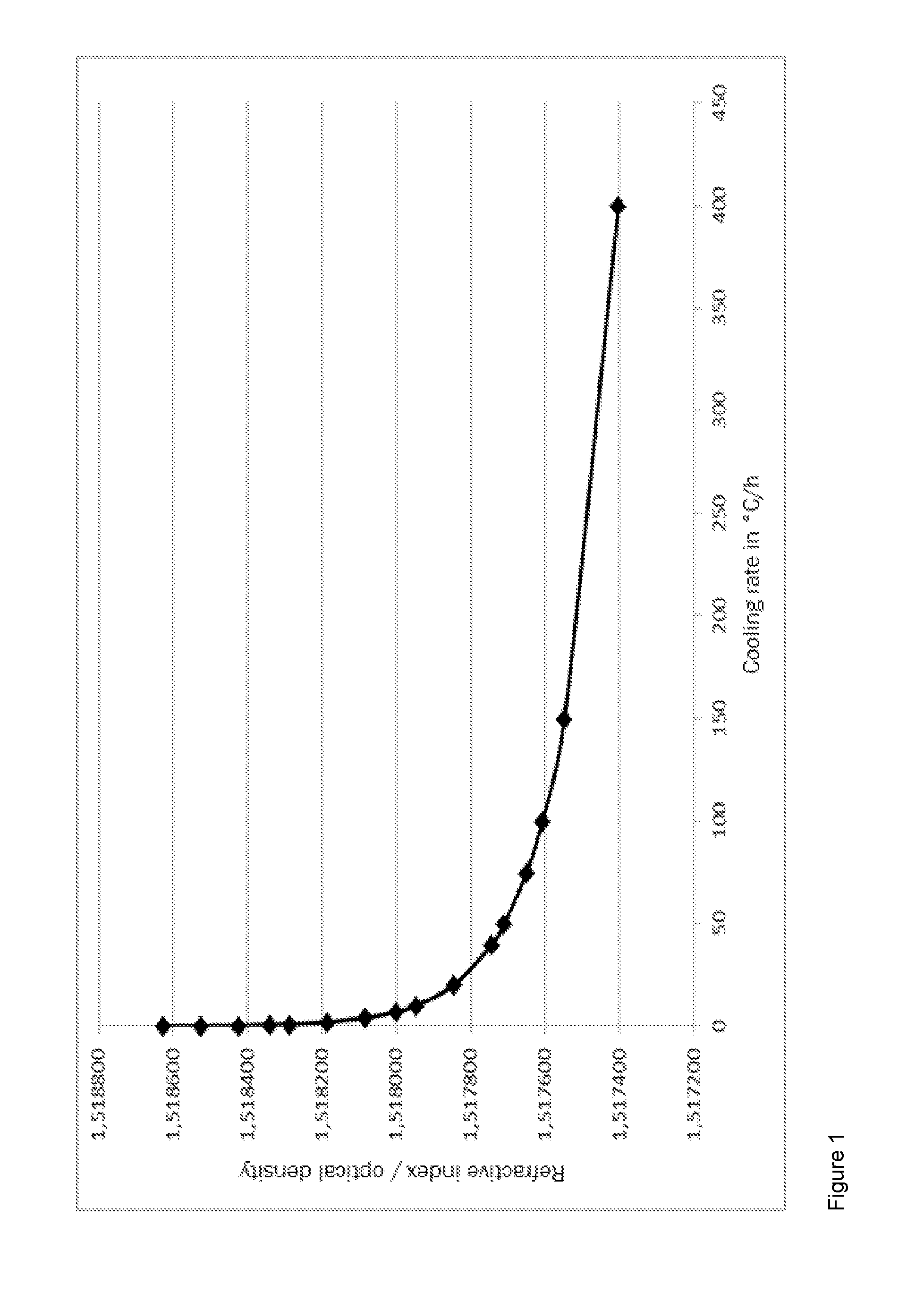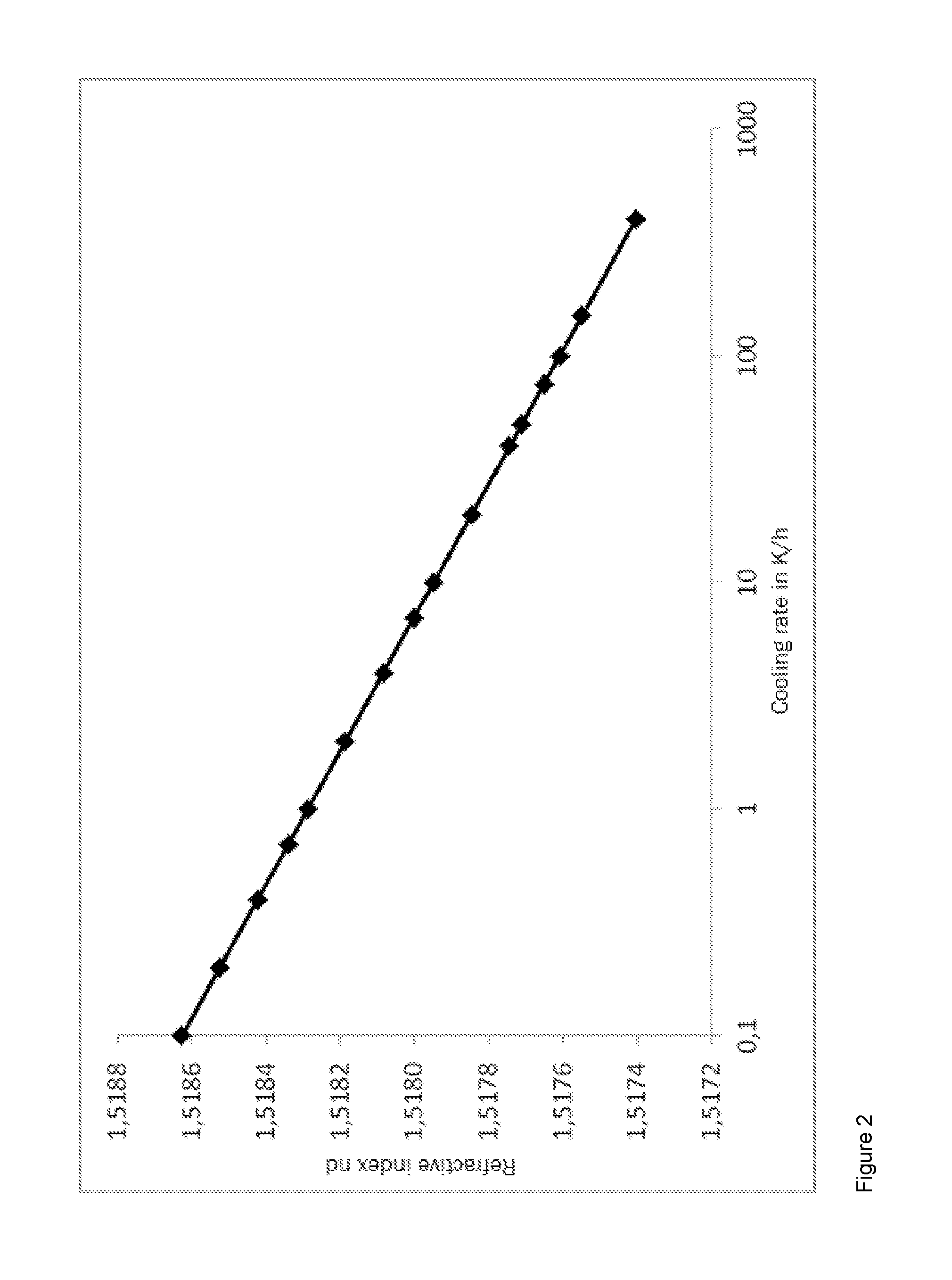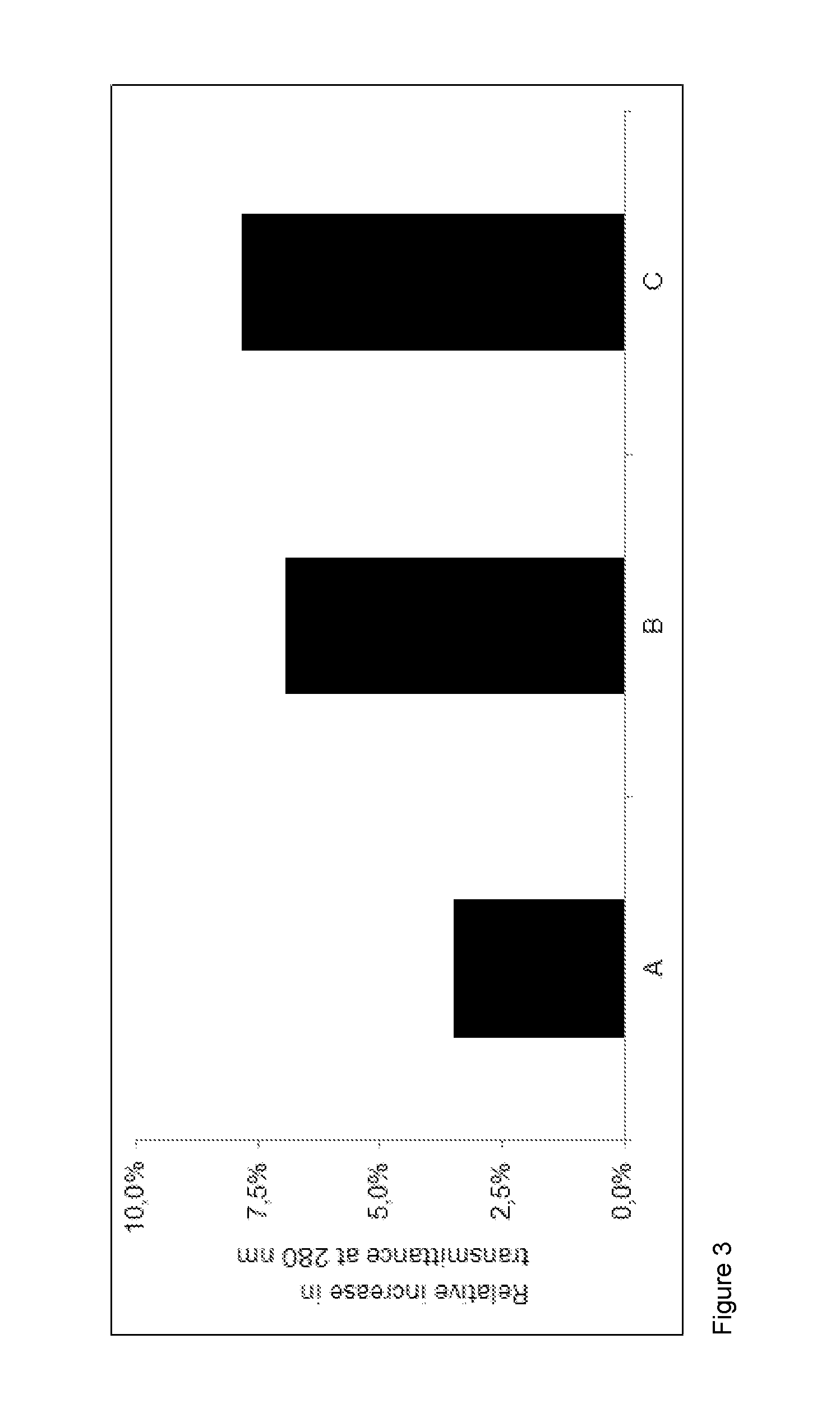Continuous production of photo-sensitive glass bodies
a production method and technology for glass bodies, applied in glass furnaces, glass making apparatus, glass shaping apparatus, etc., can solve problems such as unusable glass, crystallization-sensitive glass formation, and complicated production
- Summary
- Abstract
- Description
- Claims
- Application Information
AI Technical Summary
Benefits of technology
Problems solved by technology
Method used
Image
Examples
example 1
[0137]By pressing of the glass B1 in a mold a glass body with a thickness of 15 mm was produced. Thereby the melt was cooled down in the mold in such a way that the temperature range between 990° C. and 600° C. was passed through within 11 minutes. By subsequent sensitization the glass was adjusted to a cooling state, which corresponds to a cooling from 500° C. to 240° C. with an average cooling rate of 80° C. / h. The glass was sawed, ground and polished and thus adjusted to a thickness of 0.5 mm. At different positions of the glass the transmittance was measured at a wavelength of 280 nm. 40 measurements were performed and the mean value of the transmittance was at 30%. The glass was so homogeneous that the standard deviation of the transmittance was only about 0.4% of the mean value of transmittance.
[0138]The glass body was light exposed with UV-light, which had a dose of 10 J / cm2 at 320 nm. For generation of through holes with a diameter of 40 μm and a distance of the hole-centers...
example 2
[0139]A glass body was produced and light exposed as described in example 1. However, the tempering temperature was varied for investigating its influence on the etching rate. The highest etching ratio is obtained at a tempering temperature of 580° C.
example 3
[0140]A glass body was produced and processed as described in example 1. However, the designed hole-diameter was varied. It turned out that the standard deviation is independent from the designed hole-diameter.
PUM
| Property | Measurement | Unit |
|---|---|---|
| temperature | aaaaa | aaaaa |
| temperature | aaaaa | aaaaa |
| temperature | aaaaa | aaaaa |
Abstract
Description
Claims
Application Information
 Login to View More
Login to View More - R&D
- Intellectual Property
- Life Sciences
- Materials
- Tech Scout
- Unparalleled Data Quality
- Higher Quality Content
- 60% Fewer Hallucinations
Browse by: Latest US Patents, China's latest patents, Technical Efficacy Thesaurus, Application Domain, Technology Topic, Popular Technical Reports.
© 2025 PatSnap. All rights reserved.Legal|Privacy policy|Modern Slavery Act Transparency Statement|Sitemap|About US| Contact US: help@patsnap.com



